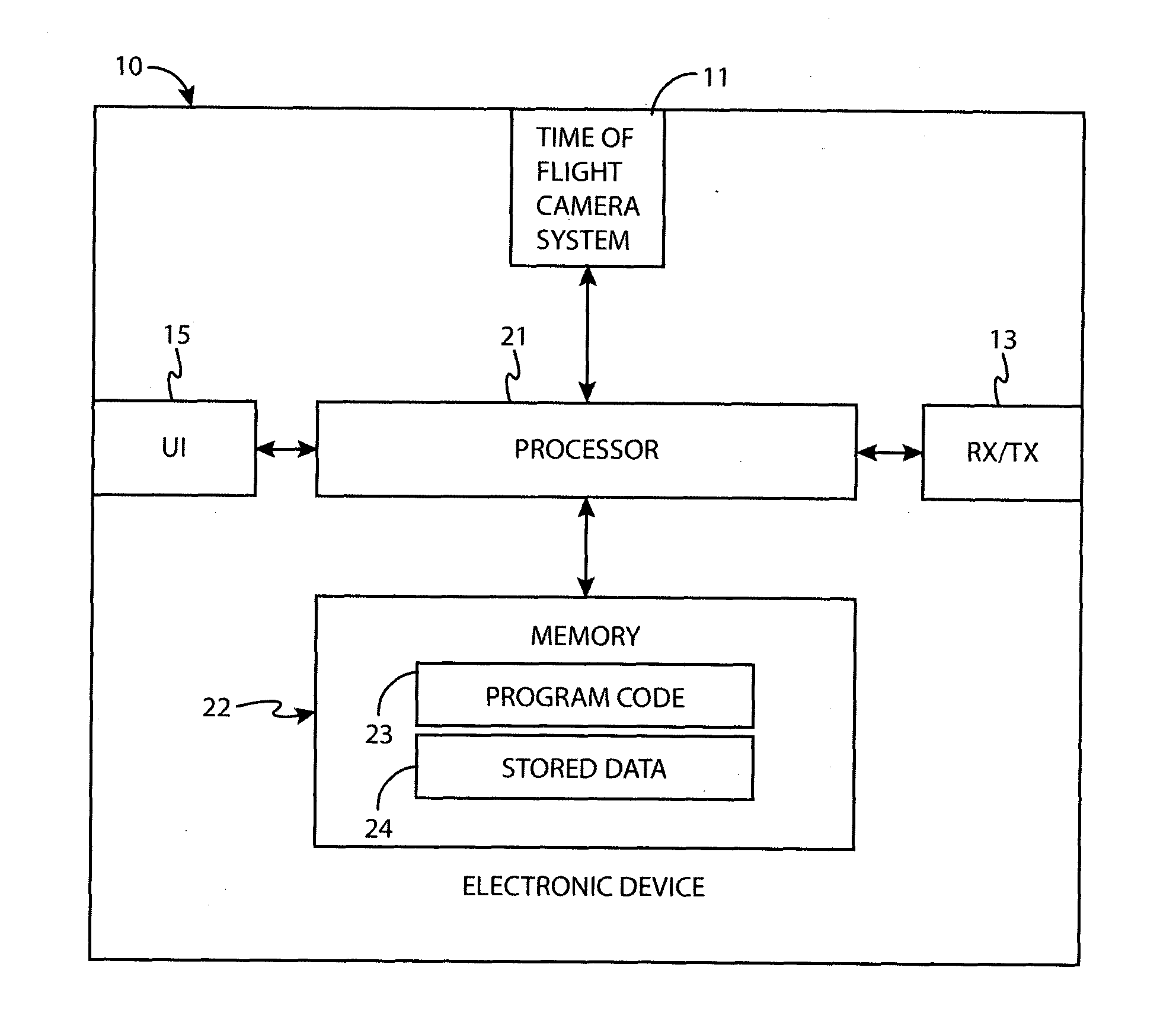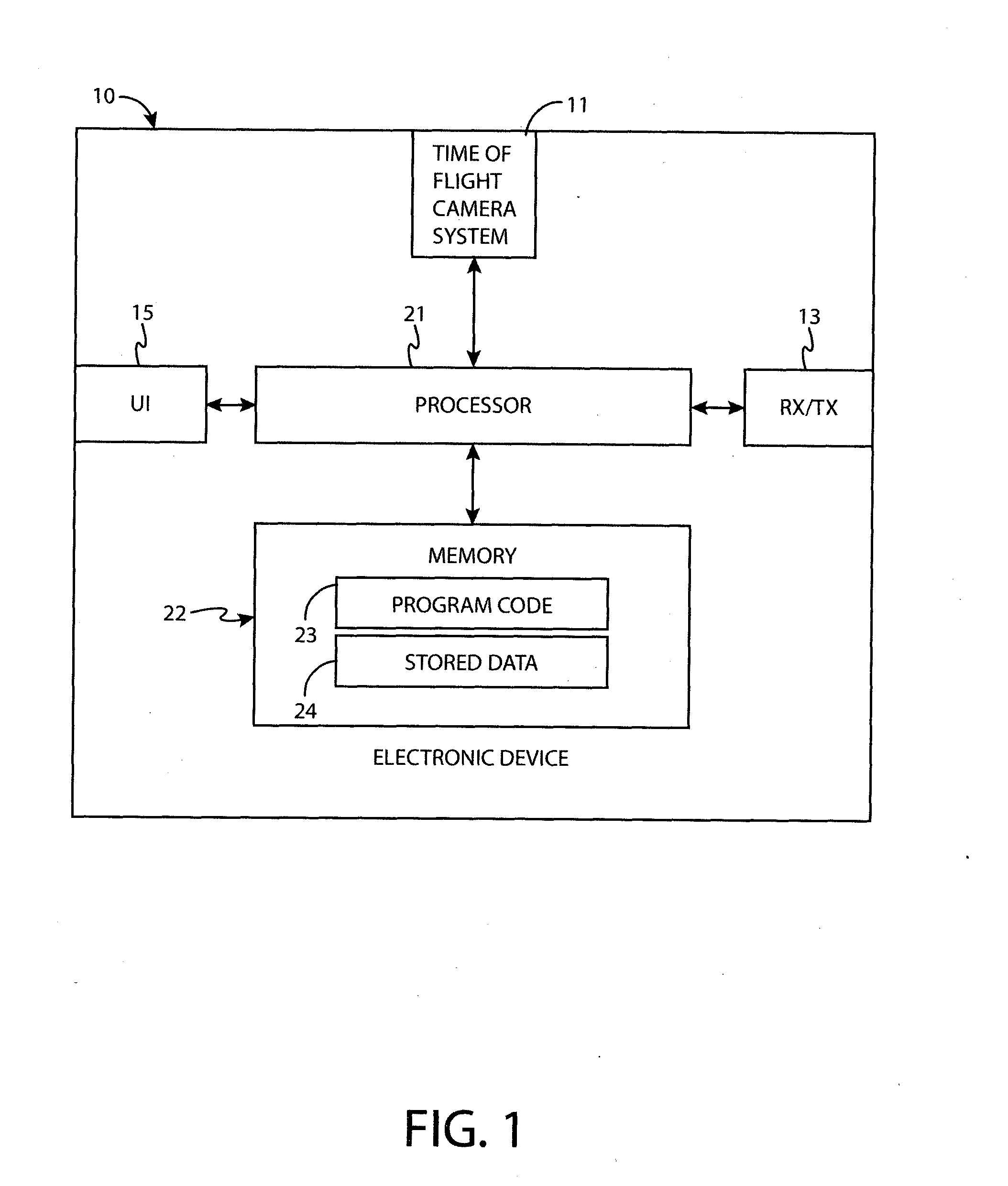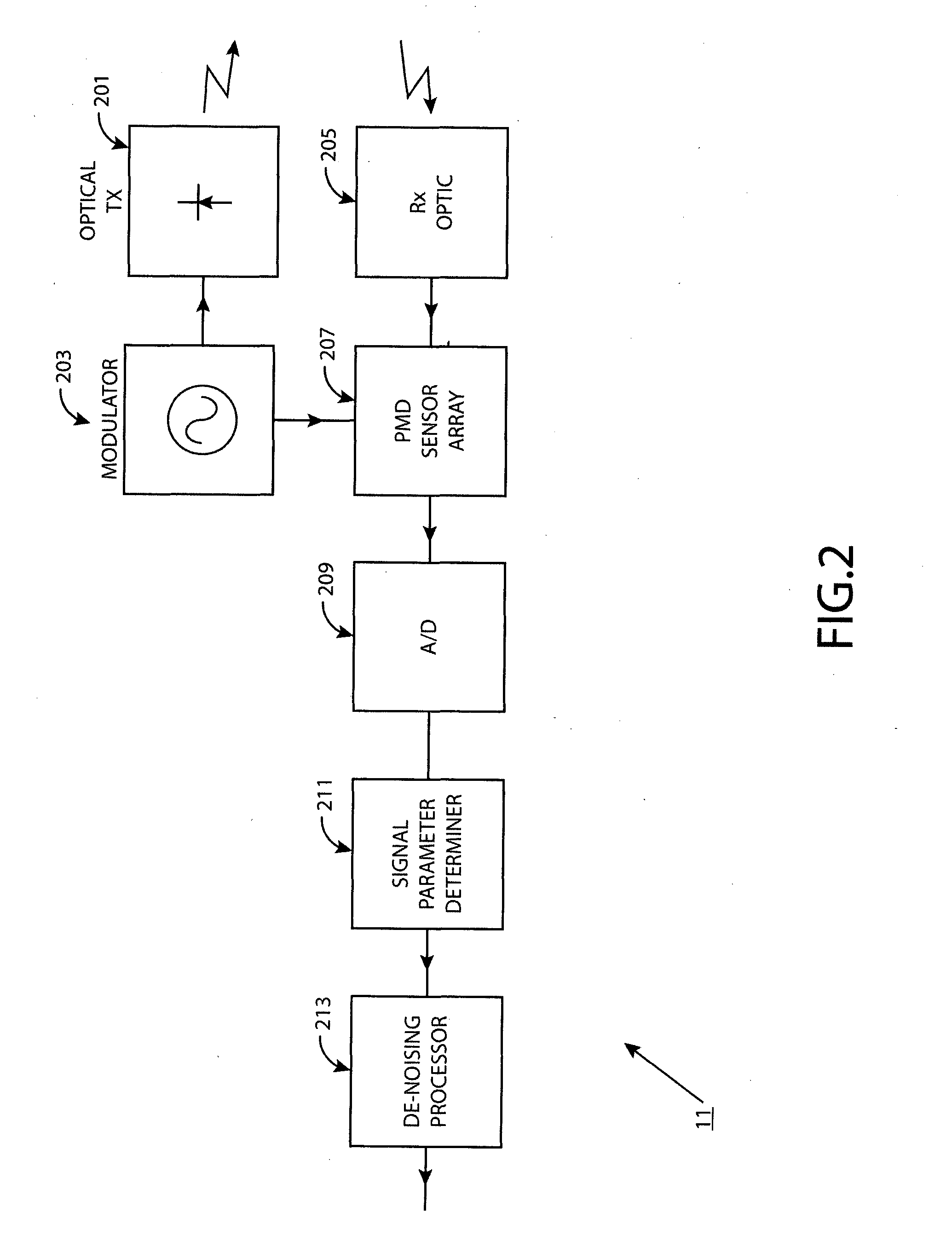A method and apparatus for de-noising data from a distance sensing camera
a technology of distance sensing camera and data de-noise, which is applied in the field of time-off-light camera system, can solve the problems of physical limitations of the sensors used, the inability to de-noise the distance map image, and the effect of noise limitation of the tof camera system
- Summary
- Abstract
- Description
- Claims
- Application Information
AI Technical Summary
Benefits of technology
Problems solved by technology
Method used
Image
Examples
Embodiment Construction
[0010]The following embodiments aim to address the above problem.
[0011]There is provided according to an aspect of the application a method comprising: determining a phase difference between a light signal transmitted by a time of flight camera system and a reflected light signal received by at least one pixel sensor of an array of pixel sensors in an image sensor of the time of flight camera system, wherein the reflected light signal received by the at least one pixel sensor is reflected from an object illuminated by the transmitted light signal; determining an amplitude of the reflected light signal received by the at least one pixel sensor; combining the amplitude and phase difference for the at least one pixel sensor into a combined signal parameter for the at least one pixel sensor; and de-noising the combined signal parameter for the at least one pixel sensor by filtering the combined parameter for the at least one pixel sensor.
[0012]The method may further comprise at least on...
PUM
 Login to View More
Login to View More Abstract
Description
Claims
Application Information
 Login to View More
Login to View More - R&D
- Intellectual Property
- Life Sciences
- Materials
- Tech Scout
- Unparalleled Data Quality
- Higher Quality Content
- 60% Fewer Hallucinations
Browse by: Latest US Patents, China's latest patents, Technical Efficacy Thesaurus, Application Domain, Technology Topic, Popular Technical Reports.
© 2025 PatSnap. All rights reserved.Legal|Privacy policy|Modern Slavery Act Transparency Statement|Sitemap|About US| Contact US: help@patsnap.com



